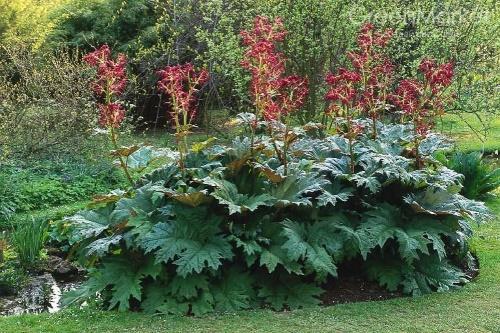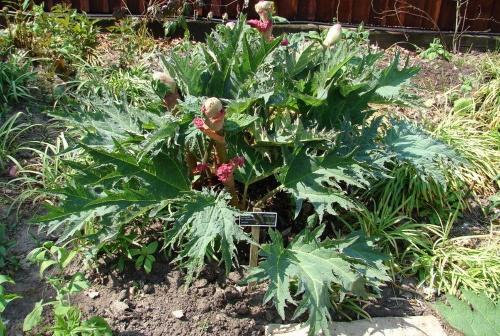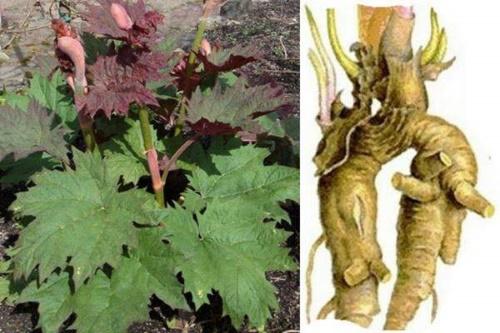Rhubarb is a useful and decorative perennial for your garden
 Luxurious shrubs with large reddish foliage and a high peduncle topped with a long cluster of white or pink-red flowers ... This is a palm-shaped rhubarb, a beautiful perennial with a versatile field of use. Originally from faraway China, in the vastness of our homeland, wild rhubarb cannot be found. Previously, this plant was grown only for decorative purposes, and even then mainly in botanical gardens. You could also meet him at herbalists who are fond of traditional medicine. Rhubarb roots have a healing effect, in fact, it is for this reason that it is planted. In addition, in recent years, the culture has switched to industrial cultivation, and because of its edibility. Young rhubarb stalks replace and even surpass our popular sorrel. They can be added to salads and first courses.
Luxurious shrubs with large reddish foliage and a high peduncle topped with a long cluster of white or pink-red flowers ... This is a palm-shaped rhubarb, a beautiful perennial with a versatile field of use. Originally from faraway China, in the vastness of our homeland, wild rhubarb cannot be found. Previously, this plant was grown only for decorative purposes, and even then mainly in botanical gardens. You could also meet him at herbalists who are fond of traditional medicine. Rhubarb roots have a healing effect, in fact, it is for this reason that it is planted. In addition, in recent years, the culture has switched to industrial cultivation, and because of its edibility. Young rhubarb stalks replace and even surpass our popular sorrel. They can be added to salads and first courses.
For the shape of the leaves, palm-shaped rhubarb is also called dolon-shaped rhubarb. In the scientific literature, it is simply called medicinal. The culture has several varieties, differing only in the color of the foliage. The most famous among them is Tangut rhubarb with red - purple foliage.
Characteristic features of culture


The plant has a powerful and developed root system. In one place the bush can grow up to 15 years, during which time it has formed a short but branched rhizome. The roots themselves are brown, thick, with light fleshy flesh in the section.
At the age of 2 years, rhubarb blooms, releasing a long peduncle at the beginning of summer. At its top there is a large, dense panicle of small flowers. They can be white, pink, or red. Rhubarb blooms for a month, after which it sets seeds - brown nuts.
Palm-shaped rhubarb - cultivation technique
 The plant reproduces in two ways:
The plant reproduces in two ways:
- Seeds that can be sown in spring, but best of all before winter - so they sprout more amicably.
- By dividing the rhizomes in the spring, the bush is older than 3 years. To do this, you need to cut off a part of the thick rhizome with a growth point and small roots.
Rhubarb will not grow on heavy clay soil, and on sandy soil too. The soil should be nutritious and loose, pre-deeply processed. It is better to plant in partial shade, then the foliage will be large, and the petioles will be juicy. Rhubarb is not particularly demanding in leaving. It winters well, tolerates drought well (except for young bushes).The bush does not need pruning, it is enough to simply remove dry leaves in the fall. You don't need to cover either. Rhubarb is able to withstand temperatures down to 34 ° C without loss.